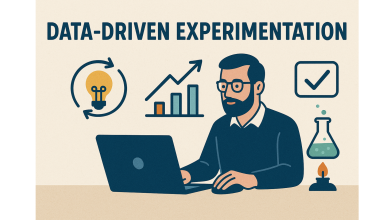
2025 is already a significant year for data centres. With AI driving increased demand, huge amounts of investment and Government-led plans have been a necessary step to support their growth. However, as this reliance becomes fundamental to business infrastructure, leaders should make sure that they are leveraging emerging technologies to bring additional value to operations.
For example, through use of agentic AI, organisations are able to automatically manage and execute tasks with minimal human intervention. This can enhance data centre operations, from workload management to data monitoring, by offering real-time and actionable insights, resulting in seamless modernisation of company processes. In a volatile business landscape, with ever-changing regulations, economical hurdles and pressure to scale, this level of automation will be pivotal to success.
Unlocking business goals
Automating data centres enables organisations to both increase their efficiency, and accelerate progress towards business goals. The majority of data centre tasks, such as data backup and software updates, are extremely time-consuming. When this is where employees are dedicating their workings hours, they are less able to add value to those decisions that require human input, from visually inspecting cables and connections, to making higher-level strategic decisions about necessary infrastructure upgrades. However, through training language models on business data, organisations can cut down on admin tasks and reduce the risk for human error.
Looking ahead to the remainder of 2025, regulations are set to put even more pressure on data centre capacity. Take the UK AI Bill, for example. As demand grows, data centres are likely to face increased scrutiny over their energy consumption. To avoid reputational damage, companies working towards the 2050 net zero target must consider how they can be flexible in their approach; balancing data centre opportunities with sustainability expectations.
Data regulation: a balancing act
Through leveraging automation across data centres, organisations can pinpoint areas with the most environmental impact, using real-time data to find solutions and cut down emissions. For example, through using Configuration Management Databases (CMDB), organisations are able to see where a data centre’s power comes from – oil, coal or renewables – and use analytics to determine its carbon footprint. With these insights, business leaders can outline data-based next steps, including consideration of the best location (e.g. public or private) to align IT systems with sustainability goals.
Automation is also pivotal for compliance. As organisations collect ever-increasing amounts of data, the regulatory landscape must constantly evolve to keep up. Regulation, such as General Data Protection Regulation (GDPR), requires organisations to consistently govern and monitor how data is stored and managed. While positive for data protection, the regulation evolution comes with a constant need for new solutions that bring both operational value and guidance towards compliance. This is where automation is key.
Data Centre Automation (DCA) manages complexities by bringing continuous compliance management and real-time visibility into the risk and compliance state of a data centre. It enables business leaders to use the compliance and vulnerability content provided by DCAs to scan the risk state of data centres against current regulatory expectations. For continued compliance, this can be set-up as a recurring task to consistently review assessment risks.
Automation’s role in collaboration
Automation can also increase productivity and benefit company results. In practice, through harnessing platforms such as Tableau, teams are able to create automated dashboards which pull data from across the organisation, providing a centralised, real-time view of key performance indicators (KPIs) for all teams. Once resource management is enhanced and communications are streamlined, uncompleted tasks can be correctly assigned and completed.
This approach to automation should be adopted to unlock efficiency in data centres too. When key stakeholders, such as engineers, IT specialists and executives, easily communicate with one another, they can collaborate on value-driven strategy decisions, making business objectives widely known and, in turn, easier to reach. Through embracing automation, this culture of collaboration comes more naturally, driving productivity and optimising operations.
What’s next for data centres?
As AI’s popularity skyrockets, data centres are facing ever-increasing demand. Through leveraging emerging technologies, like agentic AI, corporations can optimise value and increase efficiency. To enable agility in the face of new regulations, whether for data protection or sustainability, interoperable solutions should be prioritised. With the digitalisation and flexibility of data centres improved, automation will transform data centre operations and widespread efficiency for decades to come.




